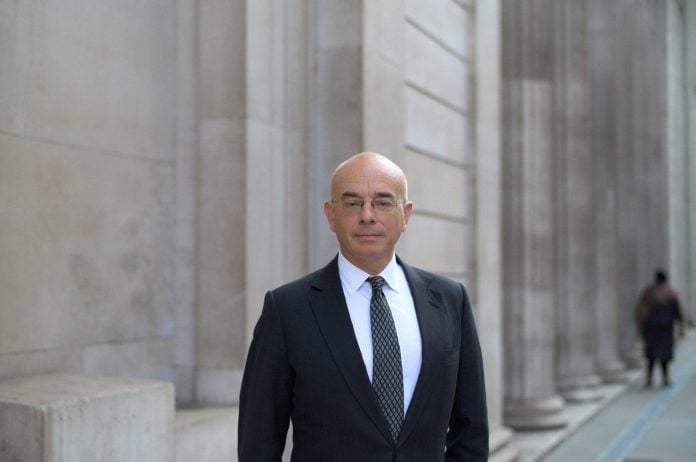Inflation, geopolitical tensions, and technological upheaval define today’s uncertain landscape. Paul Donovan, Chief Economist of UBS Global Wealth Management, tries to distinguish the temporary from the structural. His message: tariffs cause only a “12–18 month inflation shock.” The real stakes lie in data quality, central bank independence, and the profound social transformation driven by the Fourth Industrial Revolution and the $83 trillion intergenerational wealth transfer now underway.
We began our discussion with the looming U.S. government shutdown — the first since 2018 and the twentieth since 1976 — and its potential impact on the economy and markets. Donovan was reassuring. A shutdown, he explained, normally delivers a short-term “shock” while federal agencies are closed, but is followed by a strong rebound immediately afterward. As long as political polarization does not prolong it excessively, this is a manageable event.
“A 12–18 month shock”
Turning to Donald Trump’s trade policy and tariffs, Donovan dismissed fears of a new era of structurally higher inflation. In his words, tariffs generate “a 12 to 18 month inflation increase, and then you should go back to normal.”
He explained that consumers do not bear the full brunt: “A 10% tariff on a consumer good does not mean a 10% increase in the final price. In most advanced economies it means only about 4%, because you’re not applying the tariff to the shop assistant’s wages or the trucker’s fuel costs.”
The real danger, he argued, is elsewhere: that policymakers fail to recognize a slower trend rate of growth due to lower efficiency. “That’s when you risk running the economy too hot.”
“Others are playing quite nicely”
Despite America’s turn to protectionism, Donovan sees restraint elsewhere. “Internationally, there is a general sense of not imposing tariffs, because in nearly all cases these tariffs are paid by the domestic consumer.”
Europe avoids taxing its own consumers this way, while China — keen to boost domestic demand and preserve its political standing in Asia — has been careful not to engage in dumping. The result: most countries are, in his words, “playing quite nicely with one another,” with only a handful of mild steel tariffs from Canada and Mexico.
The central banks’ headache
Against this complex backdrop, how hard is it for central banks to set policy? Very hard, Donovan warns.
Fed Chair Jerome Powell has embraced a “data-dependent” approach. Donovan is skeptical: “I am not a fan. Data dependency means you’re always looking at the last data point, while monetary policy works with a 12–18 month lag.”
Worse, data quality is deteriorating. “Survey response rates have collapsed. Fewer than 50% of U.S. firms respond to the job openings survey — only about 30%. It shouldn’t even be published.” Political bias has also crept in, he noted, citing Dallas Fed surveys where extreme partisan views distort results. All this, he warned, makes policy decisions more uncertain.
Debt, deficits, and the bond market “discipline”
Government borrowing costs are rising, as deficits and debts climb. Will bond markets once again play the role of punisher, as during the eurozone debt crisis? Donovan was calm:
“Yes, debt is high compared to the past 20–30 years, but not compared to much of the 20th century. And private wealth is at record highs. The money is there.”
The challenge is to mobilize that wealth — through tax incentives, savings programs, or even new wealth taxes — to fund government bonds. Italy in the 1990s, he argued, is a precedent: despite instability, it learned to manage debt and sell bonds. France, he believes, can do the same today.
The true disruptor: the Fourth Industrial Revolution
Asked what will cause the greatest upheaval, Donovan was clear: “The structural changes of what economists call the Fourth Industrial Revolution. AI, robotics, automation, digitization, social media — this is revolutionary. It changes society, where people live, how they work.”
The upside is greater efficiency, supporting both growth and the green transition. The downside is what he calls “scapegoat economics”: when people fear change, they look for someone to blame, fueling prejudice and distorted policies.
His mantra for the next 20 years? “Right person, right job, right time.” Only then, he argues, can societies harness disruptive technology effectively.
The great wealth transfer and women’s role
Over the next two decades, around $83 trillion will change hands, mainly in Europe and North America. Much of this will first pass “sideways,” to surviving spouses, before moving down generations. As a result, women are likely to control a majority of global wealth within 20 years.
The shift is not just quantitative but qualitative: younger generations are more sustainability-focused, while women, Donovan notes, “invest in a far more rational way than men do. They do their research, commit to their decisions, and avoid panic.”
The implication: long-term projects, including the green transition, may find stronger financial support. The challenge is that too much of this capital still sits idle in bank accounts rather than being invested.















